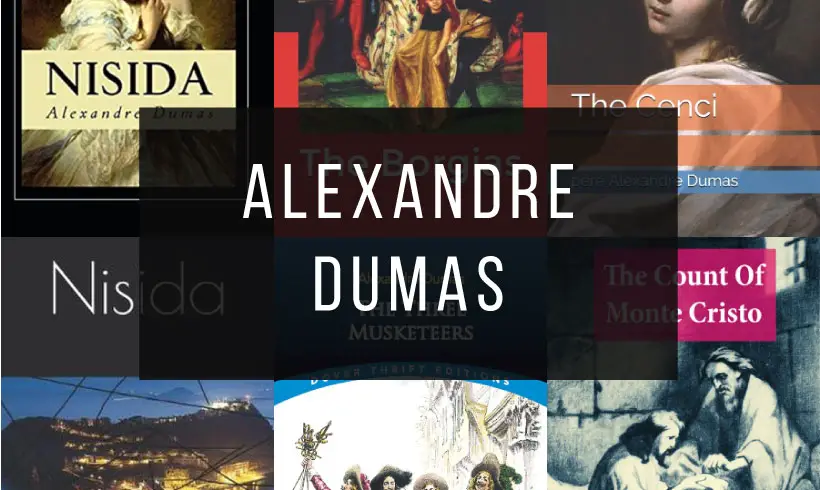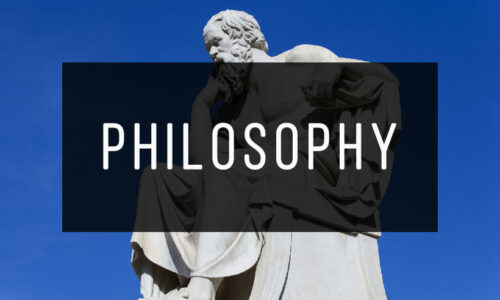In this opportunity we are pleased to present you the best 22 books by Alexandre Dumas in PDF format. But first, we tell you a little about this renowned French author:
Alexandre Dumas is a celebrated French author best known for his historical adventure novels, including “The Three Musketeers” and “The Count of Monte Cristo”.
He was born on July 24, 1802 in Villers-Cotterêts, France. He adopted the surname «Dumas» from his grandmother, a former Haitian slave. Dumas became one of France’s most popular and prolific authors, known for his plays and historical adventure novels. He died on December 5, 1870 in Puys, France. His works have been translated into more than 100 languages and adapted into numerous films.
His grandfather was the Marquis Alexandre Antoine Davy de La Pailleterie. Thomas-Alexandre adopted the name Dumas when he enlisted in Napoleon’s army, where he acquired the dubious nickname of «Black Devil».
The popularity of his writings made Dumas a household name in France and a celebrity in much of Europe.
With the money he earned from the publication of his novels, Dumas bought land and built the Château de Monte Cristo at Le Port-Marly, Yvelines, France. This house (now a museum) was intended to be a sanctuary for the author, and there he spent much of his time writing and entertaining before debts caught up with him and forced him to sell the property. He fled to Belgium in 1851, and then to Russia, to elude creditors. During his exile, Dumas continued to publish books, including travel books about Russia.
Dumas had a son, also named Alexandre, with Marie Laure Catherine Labay. His son followed in his literary footsteps. In 1840, Dumas married actress Ida Ferrier, but continued his relationships with other women. He had at least one daughter, Marie Alexandrine, out of wedlock, and dated much younger women in his old age.
Dumas died on December 5, 1870, at his son’s home in Puys, France. He was buried in the Villers-Cotterêts cemetery. In 2002, his body was transferred to the Panthéon of Paris, where Dumas rests among other greats of French literature, such as his rival Victor Hugo, Émile Zola and Jean-Jacques Rousseau.
Dumas’ adventures continue to attract readers around the world, and they have been adapted into a multitude of films. An unfinished manuscript, The Last Cavalier, was published in 2008.
1) Murat

This entertaining tale was first published in the eight-volume series Celebrated Crimes. It recounts the fall from grace of the former victor of Jena and Eylau, the time he spent in hiding on the outskirts of a French town, and his subsequent death.
Joachim Murat was a man who distinguished himself from many others. He held many titles in his life: he was marshal of the French army, grand admiral of France, grand duke of Berg and even became king of Naples.
Murat is a story in which Dumas makes use of his skillful writing to tell us about a man so relevant that his name appears on the Parisian Arc de Triomphe next to those of other great marshals of France.
2) Vaninka

This novel is part of the “Celebrated Crimes” series and is set in 19th century Russia, specifically in St. Petersburg. It tells the story of Vaninka, the daughter of a general of the Russian imperial army during the reign of Tsar Paul I.
Vaninka is a romantic story that tells how the beautiful young woman becomes involved in the tragic but accidental death of her lover -who was one of her father’s officers-, which leads her to commit other crimes to cover up the tragedy.
In this work Dumas puts into practice his gifts as a novelist, leaving aside his facet as a historian, leaving us a novel that narrates the price that the protagonist must pay for her arrogant will to play with human hearts.
3) The Borgias
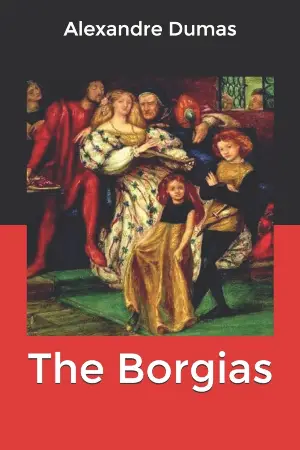
The series Celebrated Crimes of 1839-1841 compiles in 8 volumes stories and essays about criminals and crimes of great relevance for the history of Europe, among them The Borgias.
In this work Dumas has no qualms in bringing to light the rumors surrounding this family. Although it should be clarified that in it there are events of dubious veracity, so it is up to the reader to discern which facts correspond faithfully to history and which are the product of the novelist’s vision to embellish the story.
The events that give rise to The Borgias begin with Rodrigo de Borja being elected Pope in 1492. This is followed by a decade full of intrigues and assassinations with the sole purpose of gaining power and wealth without any moral scruples to curb such ambitions. We also have Cesare Borgia, who is described as a ruthless killer.
4) The Cenci

The Cenci was first published as part of “Celebrated Crimes” and is the second work in the series. It tells the shocking and tragic story of the Cenci family, a powerful and well-known family in 16th century Rome.
First we have the father of the family Francesco Cenci, an aristocrat of violent and immoral behavior, who treated his children with cruelty and hatred, especially his daughters, whom he also exploited sexually.
After many tortuous events, his family decided to have him assassinated and although for a while they thought they could get away with it, their luck was not so fortunate. This was followed by the torture suffered by one of the daughters, Beatrice, at the hands of the authorities in Rome – including the Pope – who took brutal and bloody revenge.
5) Ali Pacha

Ali Pacha is another of the works included in the series “Celebrated Crimes” and rightly so. This fictional biography tells the story of Ali Pacha, a despot and leader of the Ottoman Empire known for his cruelty and brutality towards anyone who opposed him.
This tyrant ruled much of Europe in the 18th and 19th centuries, and his reign was marked by numerous atrocities and excesses that became notorious throughout the region.
Pacha maintained his power by signing alliances with whoever offered him the greatest advantages at the time. He even allied with Napoleon to obtain a seaport on the Albanian coast, and when Napoleon was defeated in Egypt, he switched sides and allied with the British. This work is a must read for Dumas fans and history buffs.
6) Nisida

Nisida is an essay from 1825 that also belongs to the collection “Celebrated Crimes”. It owes its name to the Nisida, a prison in Italy that had the reputation of being a place with unbearable, miserable conditions and where cruelty reigned.
Dumas wrote this work using a melodramatic style and at times making use of comedy, narrating the story of a womanizing man who tries to seduce the daughter of a poor fisherman. This attempt ends with his death at the hands of the woman’s brother, who is subsequently condemned to death and executed.
We could say that Nisida is a semi-fictional story, since Dumas claims that this story is based on a real case. Presumably the writer changed the names and details, since there is no record of the event.
7) The Three Musketeers
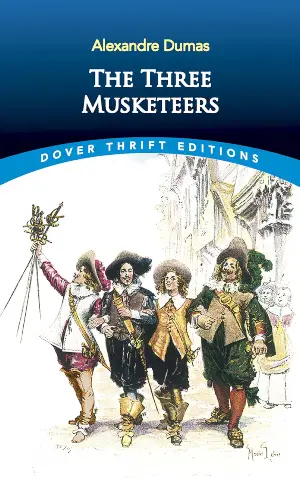
A historical romance, it recounts the adventures of four fictional swashbuckling heroes who lived under the French kings Louis XIII and Louis XIV, who reigned during the 17th and early 18th centuries.
At the beginning of the story, D’Artagnan arrives in Paris from Gascony and becomes involved in three duels with the three musketeers Athos, Porthos and Aramis. The four become such close friends that when D’Artagnan serves as an apprentice cadet, which he must do before becoming a musketeer, each of his friends takes turns sharing guard duty with him.
The Three Musketeers is the most famous of about 250 books to come from the pen of this prolific author and his 73 assistants.
8) The Count of Monte Cristo
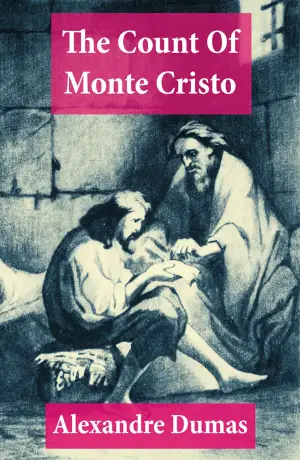
The Count of Monte Cristo (French: Le Comte de Monte-Cristo) is a classic adventure novel by Alexandre Dumas and Auguste Maquet. The latter did not appear in the titles of the work as Alexandre Dumas paid a large sum of money to make it so.
The story takes place in France, Italy and several Mediterranean islands during the historical events of 1814-1838 (the Hundred Days of Napoleon I’s rule, the reign of Louis XVIII of France, Charles X of France and the reign of Louis Philippe I of France). It deals mainly with the themes of justice, revenge, mercy and forgiveness and is told in the style of an adventure story.
Dumas got the main idea from a true story he found in the memoirs of a man named Jacques Peuchet. Peuchet told the story of a shoemaker named François Picaud who lived in Paris in 1807.
9) Twenty Years After

Twenty Years After (Vingt ans après) is the title of the second of the D’Artagnan novels, the trilogy written by Alexandre Dumas.
The year is 1648, twenty years after the events of The Three Musketeers. The history of France has changed: Louis XIII and Cardinal Richelieu have died; Queen Anne of Austria assumes the regency of the country due to the minority of age of Louis XIV, only ten years old; the new prime minister is Cardinal Jules Mazarin, of Italian origin, who maintains a not very secret relationship with the queen; and the revolutionary movement known as the Fronde is born, motivated by protests against the fiscal pressure demanded by the Thirty Years’ War.
D’Artagnan is stuck at the rank of lieutenant of musketeers, and has not seen his friends for years, until one day Mazarin decides to hire him as his personal agent. To this end, he will urge him to reunite the heroes of twenty years before, his friends.
10) The Women's War
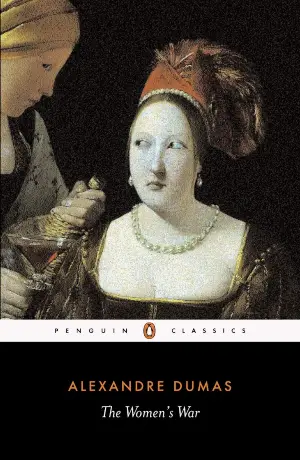
The Baron des Canolles is a man torn apart by the civil war that dominates mid-17th century France. While Gascon’s naive soldier cares little for the politics behind the battles, he is torn by a deep passion for two powerful women on opposite sides of the war: Nanon de Lartigues, an enthusiastic supporter of Queen Regent Anne of Austria, and the Vicomtesse de Cambes, who supports the rebel forces of the Princess de Condé.
The Women’s War is set around Bordeaux during the first turbulent years of Louis XIV’s reign, this novel sees two women taking center stage in a battle across France.
Humorous, dramatic and romantic, it offers a compelling exploration of political intrigue, the power of redemption, the strength of love and the futility of war.
11) Chicot the Jester
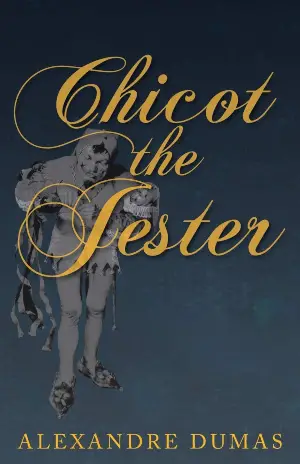
Paris, one night in February 1578. In a dark alley near the Bastille, Louis de Clermont D’Amboise, seigneur de Bussy, brave and loyal knight, fell into the ambush that the pretty King Henry III had prepared for him.
Alone against five, he owes his life only to the providential intervention of a beautiful blonde, unknown as an angel…
Thus begins the love story that forms the heart of Chicot the Jester (AKA “La Dame de Monsoreau”), a luminous tale that stands out against a backdrop of dark political intrigue and power rivalries.
12) The Vicomte De Bragelonne
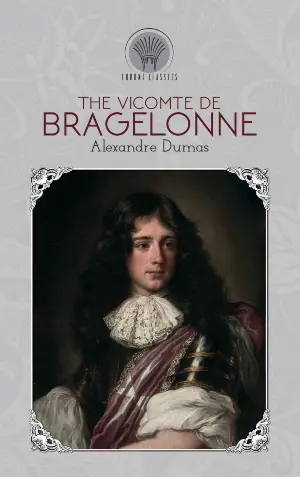
The Vicomte de Bragelonne is the third, long and last part of the D’Artagnan romances, the first part being, of course, The Three Musketeers and the second Twenty Years After.
Due to the length of this book (more than 2000 pages), it has often been published in several volumes, sometimes with different titles. The first “adventure” is the reinstatement of Charles II on the throne of England, we can read about the romantic affairs between Louise de la Vallière and the king of France, and the episode of the man with the iron mask.
It is a story full of adventures in which the fighting friends return to their wanderings.
13) The Forty-five
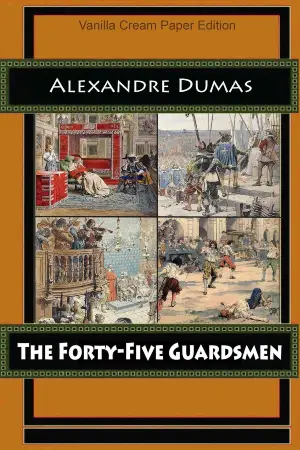
A true sequel to La Dame de Monsoreau. It deals with Diane de Méridor’s revenge on the Duke of Anjou for his foul betrayal of Bussy D’Amboise. Historically it begins with the execution of Salcède and the arrival of the Forty-Five in Paris, it also deals with the intrigues of Guise, Anjou’s campaign in Flanders and his death. Period 1584-85.
Maquet was again the collaborator. During the fête held at Villers-Cotterets in 1902, the original MS of this romance was exhibited, half in the hands of Dumas père, and the rest, the latter half, in that of his son, with a note signed by the latter to the effect that his father, confined to his bed by illness , had dictated it to the younger man. Against this, however, it has been repeatedly asserted that Maquet finished it alone.
14) Louise De La Valliere
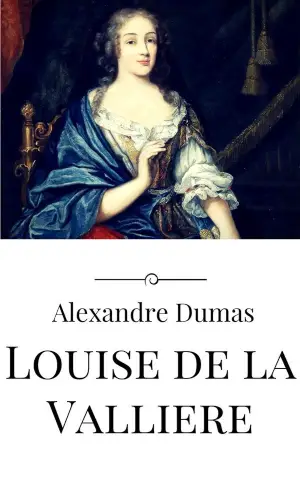
This work set in the reign of Louis XIV introduces us to Louise de la Vallière, who we also find in another novel by Dumas The Vicomte De Bragelonne, in fact, it is important to mention that due to the length of the latter, some editions divide it into several books, one of them being Louise de la Vallière.
In this novel we find a story of love and intrigue, in which Dumas continues the suspense that began with The Vicomte de Bragelonne (second sequel to The Three Musketeers), where we see the beginning of her romance with Louis.
We also meet again with other endearing characters such as d’Artagnan and the Musketeers. In addition, the love plot takes place at the same time that a crisis develops in the royal court of France.
15) The Queen’s Necklace
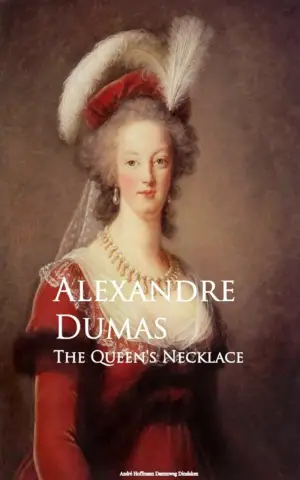
The Queen’s Necklace dramatizes an unsavory incident in the 1780s at the court of King Louis XVI of France involving the king’s wife, Marie Antoinette.
Her reputation was already tarnished by gossip and scandal, and her involvement in a crime concerning a stolen necklace became one of the major flashpoints of public opinion against the monarchy, eventually culminating in the French Revolution.
16) The Black Tulip
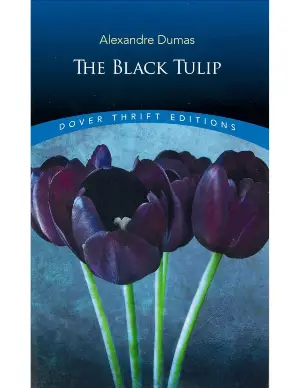
Cornelius von Baerle, a respectable tulip grower, lives only to cultivate the elusive black tulip and win a magnificent prize for his creation.
But after his powerful godfather is murdered, the oblivious Cornelius is caught up in deadly political intrigue and falsely accused of high treason by an embittered rival. Sentenced to life imprisonment, his only solace is Rosa, the jailer’s beautiful daughter, and together they create a plan to grow the black tulip in secret.
The Black Tulip is Dumas’ last major historical novel and tells a story of romantic love, jealousy and obsession, interweaving the historical events surrounding the brutal murders of two Dutch statesmen in 1672 with the phenomenon of tulip mania that gripped Holland in the 17th century.
17) The Man in the Iron Mask

In the final installment of Alexandre Dumas’ famous The Three Musketeers cycle, D’Artagnan remains in the service of the corrupt King Louis XIV after the Three Musketeers have retired and gone their separate ways. Without D’Artagnan’s knowledge, Aramis and Porthos conspire to eliminate the inept king and place the king’s twin brother on the throne of France.
Meanwhile, a twenty-three-year-old prisoner known only as «Philippe» goes missing inside the Bastille. Forced to wear an iron mask, Philippe has been imprisoned for eight years, has no knowledge of his true identity, and has not been told what crime he has committed. When the fates of the king and Philippe converge, the Three Musketeers and D’Artagnan find themselves caught between conflicting loyalties.
18) Angel Pitou

Angel Pitou is part of a series of four historical novels by Dumas covering various events from the reign of Louis XV to the French Revolution.
The series is composed of Memoirs of a Physician, The Queen’s Necklace, Angel Pitou and The Countess of Charny.
In this novel, the French Revolution has begun, hunger has made the French people take up arms to destroy everything they consider the cause of their misfortunes. The protagonist is young and becomes one of the main characters in the storming of the Bastille.
19) Ten Years Later

The Vicomte De Bragelonne is the last volume of the D’Artagnan Romances. This work is usually divided into four parts: “The Vicomte De Bragelonne”, “Ten Years Later”, “Louise de la Vallière” and “The Man in the Iron Mask”.
The title Ten Years Later may generate confusion among Dumas’ followers, since “The Vicomte De Bragelonne” also carries the subtitle “Ten Years Later”, so it may sometimes refer to the complete book or to the second volume of the four-volume edition.
The book we are concerned with is “Ten Years Later”, which contains chapters 76-140 of the 268 that make up the work, and covers the period from 1660 to 1667. It begins with the arrival of Princess Henrietta; narrates the drama, jealousy and scandals of the members of the French court; the love triangle between Louis, Louise and Raoul; and concludes with the return of d’Artagnan to Paris.
20) The Countess of Charny
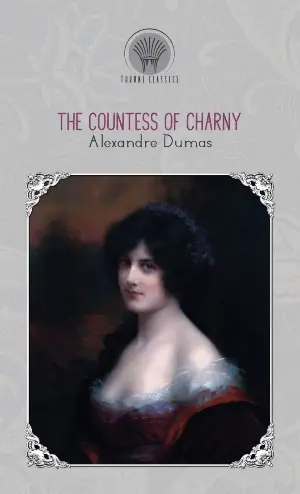
The Countess of Charny, one of the volumes that make up the Marie Antoinette Romances begins after the storming of the Bastille and the March on Versailles. King Louis XVI and Queen Marie Antoinette are forcibly escorted to Paris accompanied by their most loyal aides.
For his part, Gilbert tries to keep Louis on the throne, and Count Cagliostro (formerly known as Balsamo) conspires with the Freemasons to manipulate the revolution at a higher level. In Paris, the various factions of the National Assembly dispute politics, the fate of the nation and that of the royal family.
In this novel, the characters must navigate a bloody landscape as they try to keep their necks out of the guillotine, while the supporters of the revolution maintain their conviction to achieve a free world no matter what blood has to be shed.
21) The Lady of the Camellias

The Lady of the Camellias is a novel by Alexandre Dumas, first published in 1856.
One of the greatest love stories of all time, this novel has fascinated generations of readers. Dumas’ subtle and moving portrait of a woman in love is based on his own love affair with one of Paris’ most desirable courtesans.
La Dame aux Camélias (French title) was adapted into Giuseppe Verdi’s opera La traviata, as well as numerous theatrical and film productions, usually titled Camille in English versions.
22) The Companions of Jehu

The Companions of Jehu is set in the 19th century, during Napoleon’s rise to power. The title refers to a secret organization of young aristocrats turned bandits who continually steal money from the Directory to finance the restoration of the monarchy.
It has all the typical Dumas ingredients, i.e. duels, political intrigue, noble heroes and a tragic love story that would make Shakespeare envious. Not to mention a hero with a shady past whom the reader will love to hate.


